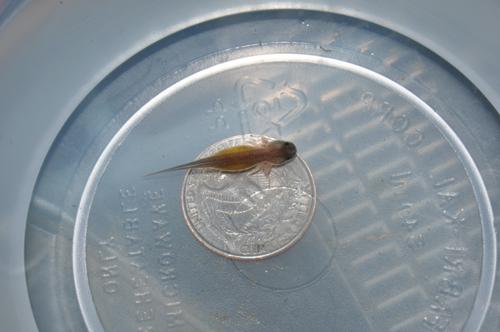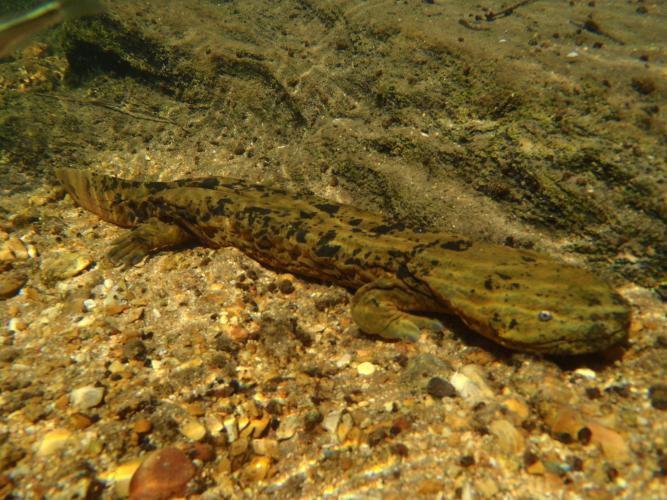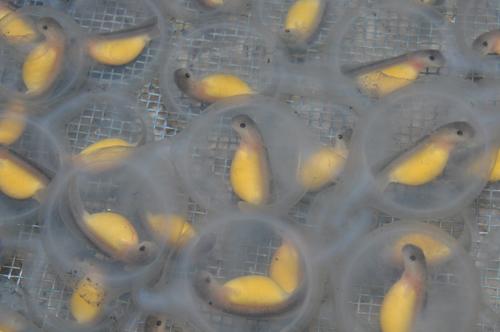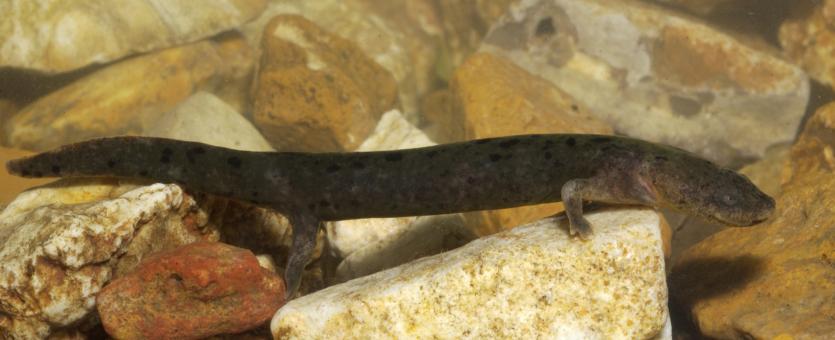Ozark and eastern hellbenders are large, aquatic salamanders that prefer shallow, swift-flowing streams and rivers.
Both subspecies of hellbenders are listed on the state endangered species list, and the Ozark hellbender is listed as an endangered species under the Endangered Species Act.
What caused their decline?
Factors likely contributing to their decline include habitat alteration and degradation, water quality degradation, predation, illegal harvest, and disease.
Taking action to save the hellbender
MDC’s Shepherd of the Hills Hatchery in Branson, and the Ron Goellner Center for Hellbender Conservation, WildCare Institute at the St. Louis Zoo are devoted to long-term reproduction efforts of the species.
Both of these facilities are hatching eggs collected from the wild to head start young for release and to breed the species in captivity.
MDC’s Shepherd of the Hills Hatchery has hatched more than 2,700 eastern and Ozark hellbenders. Currently, the hatchery is rearing about 780 larval and 80 juvenile eastern hellbenders to be released in the future.
The St. Louis Zoo is rearing nearly 1,550 larval and juvenile Ozark hellbenders.
The world’s first captive breeding of the Ozark hellbender occurred in the autumn of 2011 at the St. Louis Zoo and resulted in more than 150 larval Ozark hellbenders. This achievement will not only buy time to further address the decline of the species, but could save the species long-term.






























